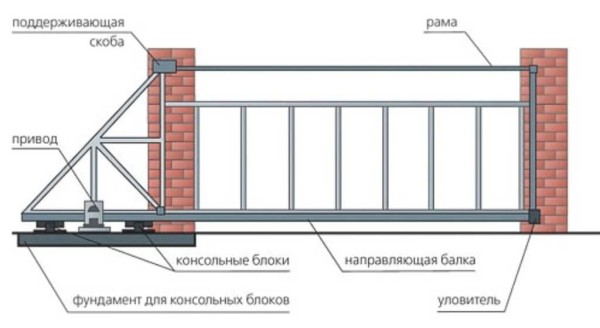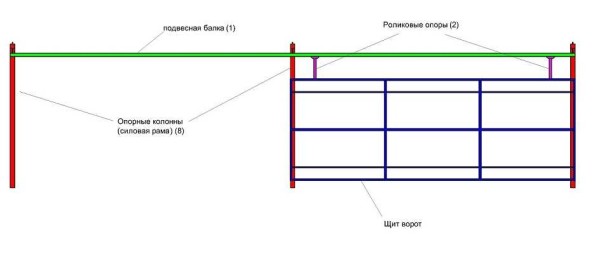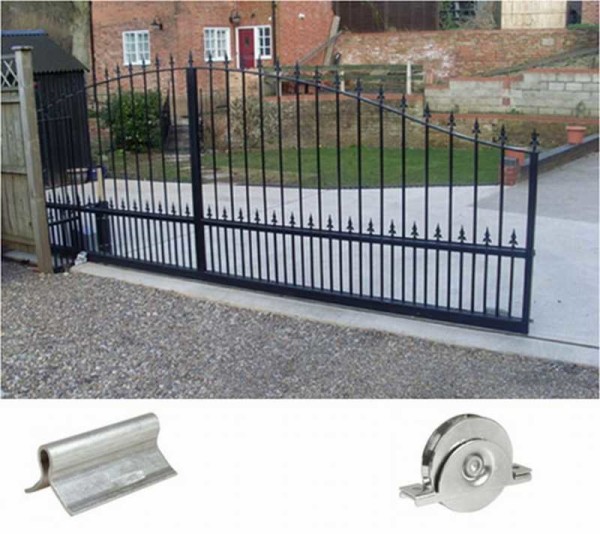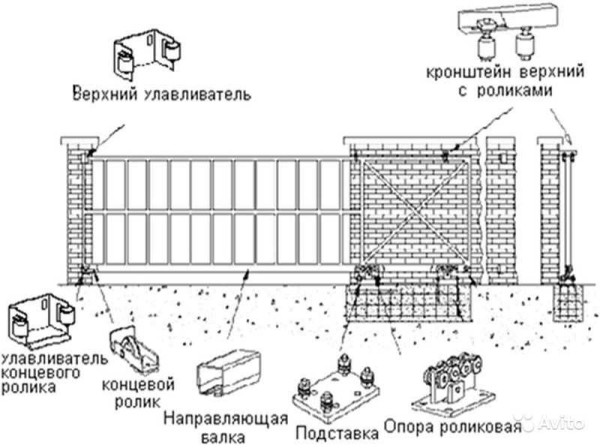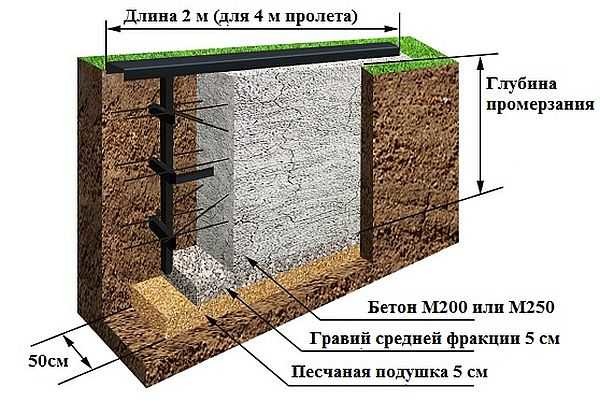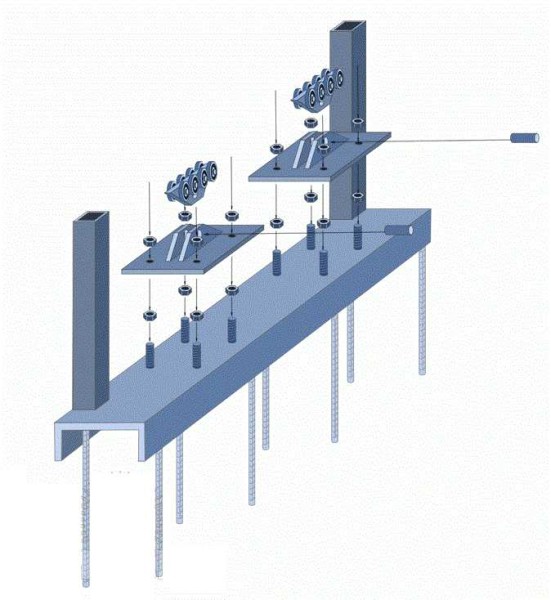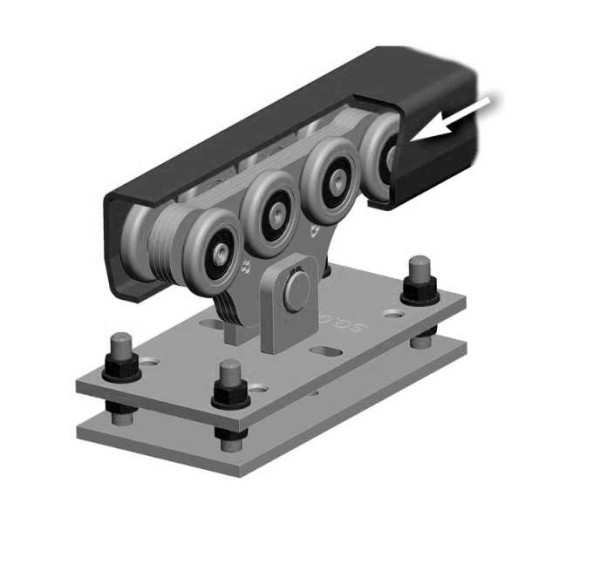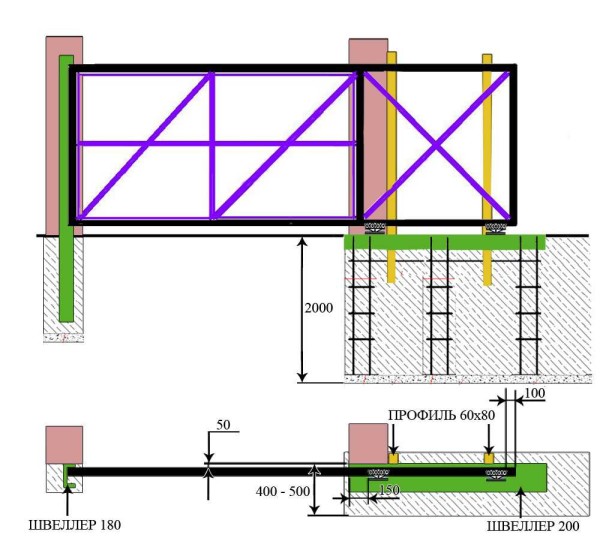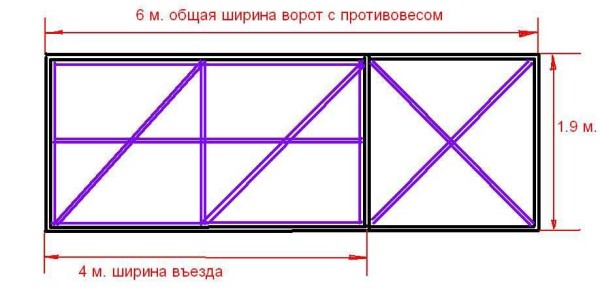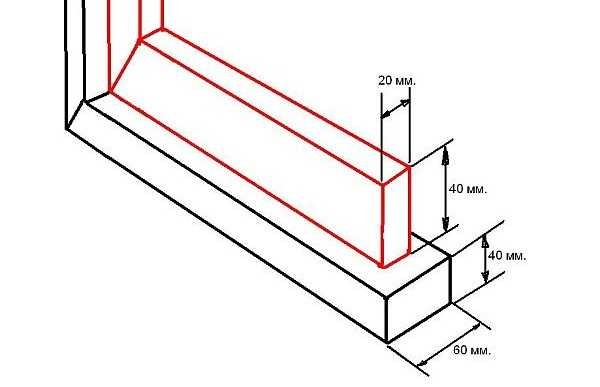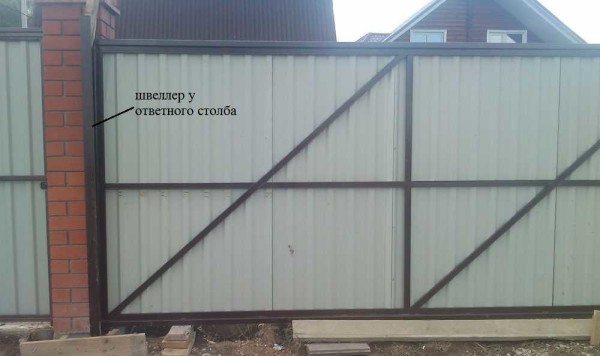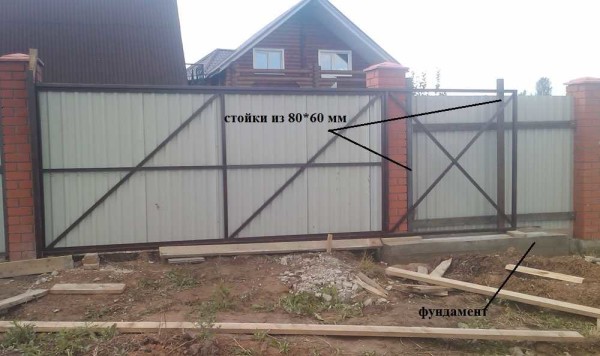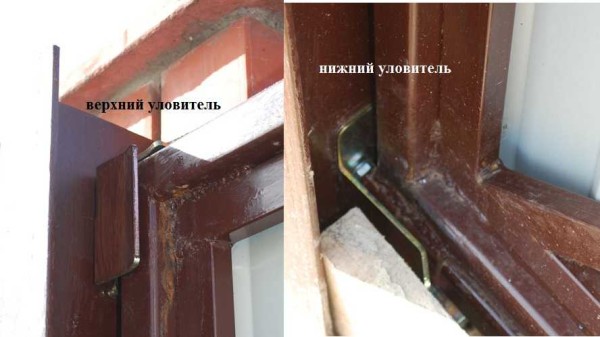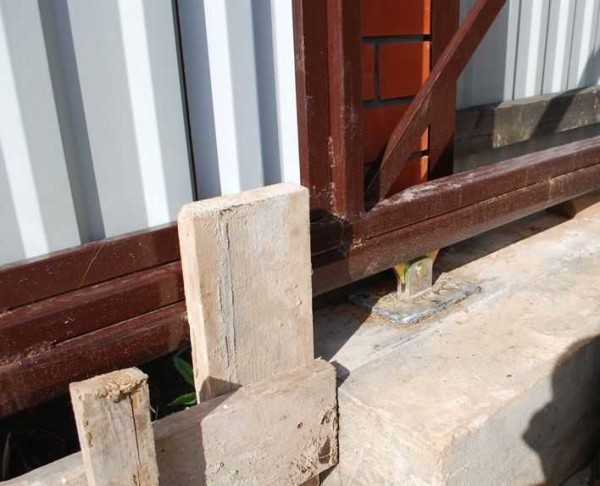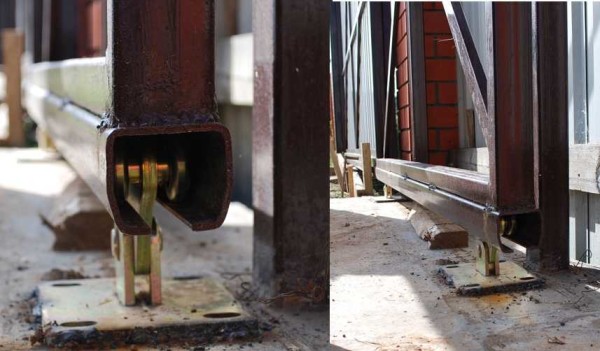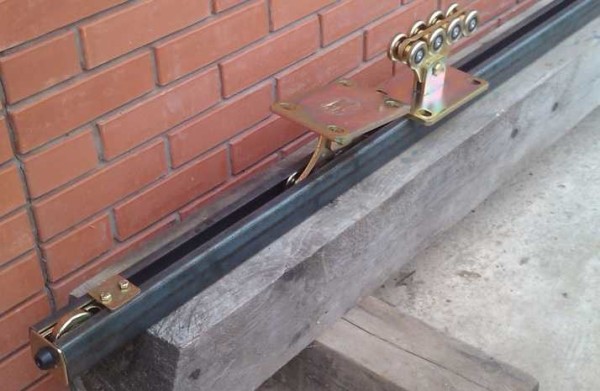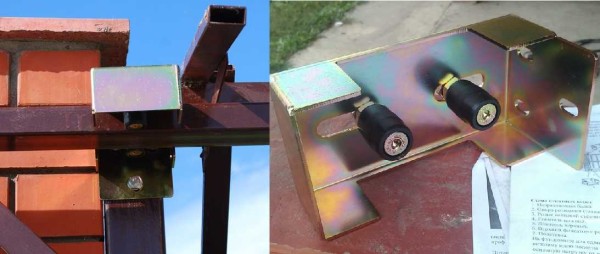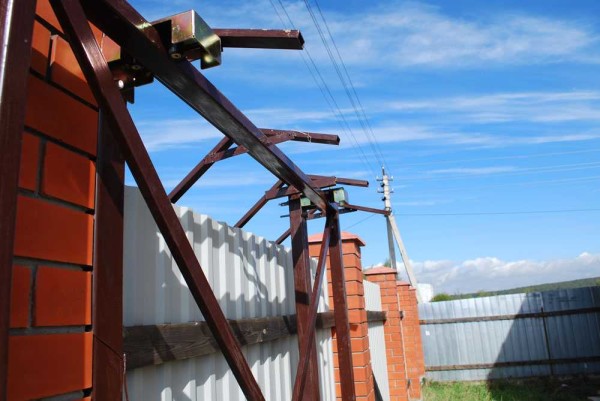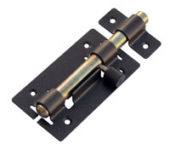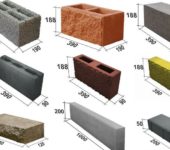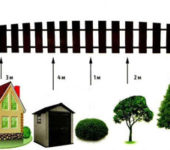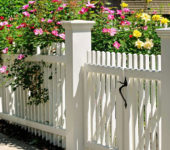How to make sliding (sliding) gates: making console gates - photo report, video
Hinged gates are good for everyone: they are simple and cheap. But in winter, when there is a lot of snow, they can only be opened thoroughly with a shovel. When you need to go to work, this is not at all happy. Sliding or, as they say, sliding / sliding gates are devoid of this drawback. The one-piece construction, covering the entire entrance, slides to the side, hiding behind a fence. They can be held on a regular or cantilever beam, or they can simply ride on rails. In any case, you can make a sliding gate with your own hands. It's not easy, but possible.
The content of the article
Constructions
By type, sliding (sliding, sliding) gates are:
- Cantilever - with a beam, one end of which is fixed, the other hangs in the air. The beam has a U-shaped profile with steps inside. The rollers move along it inside. The entire load from the door leaf is transferred to the beam through the rollers.
At its location, they are:
- with a lower beam;
- middle beam;
- top beam.
- Suspended. This structure also has a beam, but it rests on both pillars on the sides of the gate. It also has a special structure, similar to the letter "P" only with the edges bent inward. There are also rollers inside, the door leaf hangs on them. This is how the canvas moves.
- Retractable on the rail. A rail is mounted in the ground, rollers are attached to the lower part of the gate leaf. The canvas rolls along the guide. The design is the simplest, but its disadvantage is that the rail and the rollers themselves are clogged with snow, mud, leaves.
Which is better
Which design is better is hard to say. If we talk about reliability, then the best choice is a suspended structure. Everything is easy and reliable, practically indestructible system. Doors of this type have been in use at enterprises for decades. Their disadvantage is that the beam limits the height of the incoming vehicle, which is sometimes important. But today there are models with composite beams that allow you to remove the lintel over the entrance when the gate is open, and then return it to its place.
The cheapest and easiest to implement is a system on a rail. These sliding gates are the easiest to assemble with your own hands. But operational problems make it unpopular.
Of all the above structures, the most expensive and complex in execution is the console one, nevertheless it is it that is installed most often: if done correctly, it does not cause inconvenience during operation. When choosing, it should be borne in mind that when it is installed to the right or left of the gate, a distance is required one and a half times greater than the width of the canvas: in addition to the sash itself, there is also a technical part that protrudes from the side by about half the length.
The types of sliding gates, design features and construction are discussed in detail in the video.
How to make cantilever sliding gates
This design is good because there are no beams above the passage. But it is the most expensive in the device. The point is not so much in the roller system as in the need for a foundation with metal embeds, to which the cantilever beam will then be attached. If there are already pillars, the foundation is poured in front of it and along the fence to the length of the technical extension, which is necessary to compensate for the load created by the canvas.
Even if they make cantilever sliding gates with their own hands, a set consisting of a guide beam, rollers, end rollers and catchers is usually bought from a company.All spare parts are calculated based on the dimensions of the canvas, the material of the frame and the type of covering: weight is essential. Therefore, it is advisable to determine all these parameters in advance.
Knowing the length of the supporting beam, you can calculate the required foundation size. By type, it is a strip foundation, a pit for it is dug below the freezing depth of the soil (for each region it has its own), in which reinforced supports are laid under plates with rollers, and racks are also installed. A set of upper rollers is then attached to these posts to hold the web and prevent it from wobbling.
How to Calculate a Cantilever Beam Fastening Foundation
There is nothing complicated in the calculation. The foundation is almost half the length of the span. If the span is 4 meters (the width of the passage or the distance between the pillars), then the foundation should be 1.8-2 m. Its width is 40-50 cm, the depth is below the depth of soil freezing for the region.
The pit is dug another 10-15 cm deeper - under the gravel-sand cushion. This foundation is reinforced (of the type tape), in its upper part a channel (18 or 20) is welded to the reinforcement and all this is poured with concrete. The channel is set to the "zero" level, that is, it must stand at the same level as the ground or the material used to decorate the yard.
There is a cheaper and faster option, but in terms of reliability it is inferior to the one described above. Three screw metal piles are screwed into the ground, a channel is welded to them.
Installation of roller bearings
Studs are welded to the embedded channel, then platforms with rollers are attached to them on bolted connections. Sometimes you can find options when the platforms are welded directly to the mortgage. It is not right. There is a fairly high probability that the foundation or fence post will shrink. Even a small offset - and your gate will not work. If the rollers can be removed from the studs, the studs can be digested and everything is assembled in place, then how to correct if the platform is welded? Cutting down? Difficult, long, without guarantees. So it is better in this case to do everything according to the rules.
When buying, pay attention to the roller carriages and the rollers themselves. These are necessarily closed rolling bearings. They are usually arranged in two rows of 4 pieces each. The lubricant in them must be frost-resistant - the lower temperature limit is -60 ° C. Examine the platform they are attached to. It should be steel, cast, good metal with a galvanized surface, coated with protective grease.
Roll the rollers. Everyone should roll effortlessly, and should not have any backlash (should not wobble from side to side). Then you can be sure that the gate will move easily and the retractable mechanism will work for a long time (some companies give a 10-year guarantee). After all, most of the load falls on the rollers, because their quality is a key point, as is the balanced design of the blade.
The rest of the installation stages will be more clearly described in the photo report: the gates were assembled independently, without the involvement of specialists.
Read about swing gate automation here.
DIY sliding gates: photo report with explanations
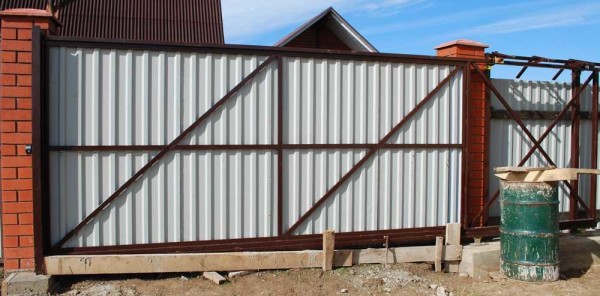
These gates are made on the basis of a ready-made kit, the frame was made by ourselves, and we also assembled it ourselves.
The gates were set in Moscow, respectively, the prices were in the capital. They were installed in 2010, since then the kits have become much cheaper. For example, the "fresh" price of a drive for a blade weighing no more than 400 kg (there are up to 1.2 tons) is about $ 100, but this is a budget option. During the construction period, Rolling Center components were purchased (the best on the market at that time) with a leading beam 6 meters long. The upper catcher and bracket were also ordered separately. Everything with delivery cost about $ 600.
The following materials were also purchased:
- profile pipe 80 * 60 mm - 6 m, 60 * 40 mm - 18 m, 40 * 20 mm - 36 m;
- channel - 180 mm - 3 meters, 200 mm - 2.4 meters;
- reinforcement 12 mm - 6 m;
- electrodes - 2 kg;
- paint - 3 cans, brushes, rivets;
- cement M-400 - 5 bags;
- corrugated board was bought when making a fence.
The first step was to weld a gate frame with a counterweight. The frame (in black) was made from a profile pipe 60 * 40 mm, lintels and an inner frame (lilac) from a pipe of 40 * 20 mm. At the bottom, a guide beam is welded with a cut down.
The inner frame was welded with an indent from the edge - 20 mm on each side. So it is more convenient to fasten the profiled sheet later, if you wish, you can sheathe it from the inside.
First, the foundation was poured. Fittings were installed in it, on top of the channel with the back up. Close to the channel there are two posts made of a profiled pipe 80 * 60 mm. One stand adjoins the post, the second is set vertically at a distance of 120 cm. Rollers are then hung on them, which hold the canvas from above. On the other hand, a 180 mm channel was installed along the counter post.
On the counterpart to the channel at the top and at the bottom, catchers are fixed, which will not allow the gate to dangle in the wind.
The next step is to install the roller plates. They are attached to mortgages. In this case, this is a channel, because the space turned out to be large. When the foundation was made, it was made too high, because the plates were welded directly to the mortgage. This is impractical: if the video breaks, it will be problematic to change it. Usually, a platform is welded, to which a platform with rollers is then bolted.
The finished gate frame is simply rolled onto the fixed rollers.
After installation, plugs are put on the support beam at both ends. On the far side, a thrust wheel is also installed, which in the closed position drives into the lower catcher, raising the gate and removing the load from the rollers.
Now, so that the gate does not "walk" in the upper part (they are now not fixed by anything), sets of upper rollers are attached to the posts (80 * 60 mm) - one per post. They are practically put on the frame. Now the rollers inside will hold it at the top.
All sliding gates are assembled by hand and ready for use.
If you have any questions, watch the video. A ready-made kit is assembled in it, the whole process will become clearer.
Video
Several videos with different designs of sliding gates. The first is cantilever on the middle beam. There will be no problems with snow, but the appearance from the yard is below average.
Economy option: sliding gates for summer cottages. The design is extremely simple.
Another homemade option. Here in the pipe 60 * 60 mm, the gap is cut through, into which the rollers are inserted. The design is taken as standard, assembled from various components.

